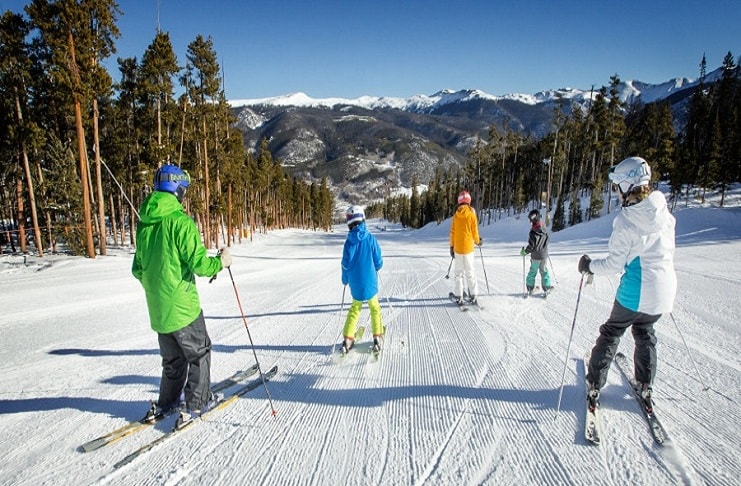
Ski holidays are often seen as luxurious and expensive, but with careful planning and a few savvy strategies, it’s possible to enjoy the slopes without breaking the bank. From booking at the right time to finding affordable gear and choosing affordable catered chalet, there are plenty of ways to cut costs while still having a fantastic winter adventure. Here are the top tips on how to save money on your next ski holiday.
1. Book Early or Look for Last-Minute Deals
Timing is everything when it comes to saving money on a ski holiday. Booking early can help you secure the best deals on accommodation, lift passes, and flights. Many resorts and airlines offer early-bird discounts if you book several months in advance. Plus, booking early gives you a wider selection of accommodations, making it easier to find budget-friendly options.
On the other hand, if you’re flexible with your travel dates, last-minute deals can offer significant savings. Some resorts reduce prices on unsold rooms and lift passes as the season progresses, especially if they’ve had a slow start.
Tip: Sign up for newsletters from ski resorts and travel companies to stay updated on both early-bird and last-minute deals.
2. Avoid Peak Season
Skiing during the peak holiday season, such as Christmas, New Year’s, and school breaks, often means higher prices for accommodation, flights, and lift passes. If possible, plan your trip outside these busy periods. January and late March to early April are often quieter and more affordable times to ski, with the added benefit of fewer crowds.
Tip: Midweek skiing is typically cheaper than weekends, and the slopes are less crowded.
3. Choose a Budget-Friendly Ski Resort
Not all ski resorts are created equal when it comes to pricing. While some famous resorts come with high price tags, there are plenty of lesser-known resorts that offer great skiing at a fraction of the cost. Resorts in Eastern Europe, such as those in Bulgaria, Romania, or Slovenia, are known for being affordable alternatives to the expensive slopes of France, Switzerland, or Austria. Similarly, smaller, local ski resorts often offer lower prices compared to big-name destinations.
Tip: Research smaller resorts in your region that offer good value for money. You may be surprised by the quality of skiing available at more budget-friendly locations.
4. Consider Self-Catered Accommodation
One of the biggest expenses on a ski holiday is accommodation, particularly if you’re staying in a hotel with full board or half board. Opting for self-catered accommodation, such as an apartment or chalet with a kitchen, can help you save on dining costs. You can prepare your own meals, snacks, and drinks, avoiding the high prices of resort restaurants and bars.
Tip: Buy groceries in a nearby town before you head to the resort, as prices at mountain shops are often inflated.
5. Rent Gear Instead of Buying
Skiing requires a lot of gear—skis, boots, poles, helmets, and clothing—all of which can add up if you’re buying new. Instead of purchasing all your equipment, consider renting skis, boots, and helmets from local rental shops. Many resorts have rental services that offer discounts for booking online or in advance. Renting allows you to save money, especially if you only ski occasionally.
For clothing, borrowing from friends or renting can also help cut costs. There are online rental services that offer ski jackets, pants, and goggles at a fraction of the cost of buying new.
Tip: If you plan to ski regularly, consider buying second-hand equipment or looking for end-of-season sales for good deals on gear.
6. Buy Lift Passes in Advance
Lift passes can be one of the most expensive parts of a ski holiday, but there are ways to save. Many resorts offer discounts for purchasing lift passes in advance, especially if you buy online. Look for multi-day or family passes, which can provide better value than buying daily lift tickets.
Some resorts also offer special deals for beginners, including discounted lift passes that give access only to beginner slopes.
Tip: Check if your destination offers combo deals on accommodation and lift passes, as booking them together can sometimes lead to further discounts.
7. Take Advantage of Free Ski Lessons and Discounts for Kids
If you’re travelling with children, look for resorts that offer free or discounted skiing for kids. Many family-friendly ski resorts provide free lift passes for younger children, free lessons for beginners, or special packages for families. In some places, kids under a certain age ski for free, and you can often find promotions like “kids ski free” when booking with certain accommodations.
Tip: Ski schools sometimes offer group lessons at a lower cost than private sessions, which can save money while still ensuring your kids learn the basics.
8. Pack Smart to Avoid Extra Costs
Before heading off on your ski trip, make sure you pack everything you’ll need. Ski resorts often charge premium prices for essentials like sunscreen, lip balm, and water bottles, so bring these items with you. Packing your own snacks for the slopes, such as energy bars and trail mix, can also help you avoid the high prices of mountain restaurants.
Tip: Bring reusable water bottles and a thermos of hot drinks from your accommodation to avoid paying for expensive beverages on the mountain.
9. Use Public Transportation or Carpool
Transportation to and from ski resorts can be expensive, especially if you’re flying or renting a car. Consider using public transportation, such as buses or trains, which can be more affordable than renting a vehicle. Many European ski resorts are easily accessible by train, and some even offer special discounts for those travelling by rail.
If public transportation isn’t an option, try carpooling with friends or other families to split the cost of gas and parking.
Tip: Some resorts offer free or discounted shuttle services from nearby towns or airports—check with your resort before booking a rental car.
10. Bring Your Own Food to the Slopes
Eating out on the mountain can quickly add up, with resort restaurants often charging high prices for simple meals. To save money, bring your own packed lunches and snacks to enjoy between runs. Many ski resorts have designated picnic areas where you can stop for a break and eat your packed meal.





